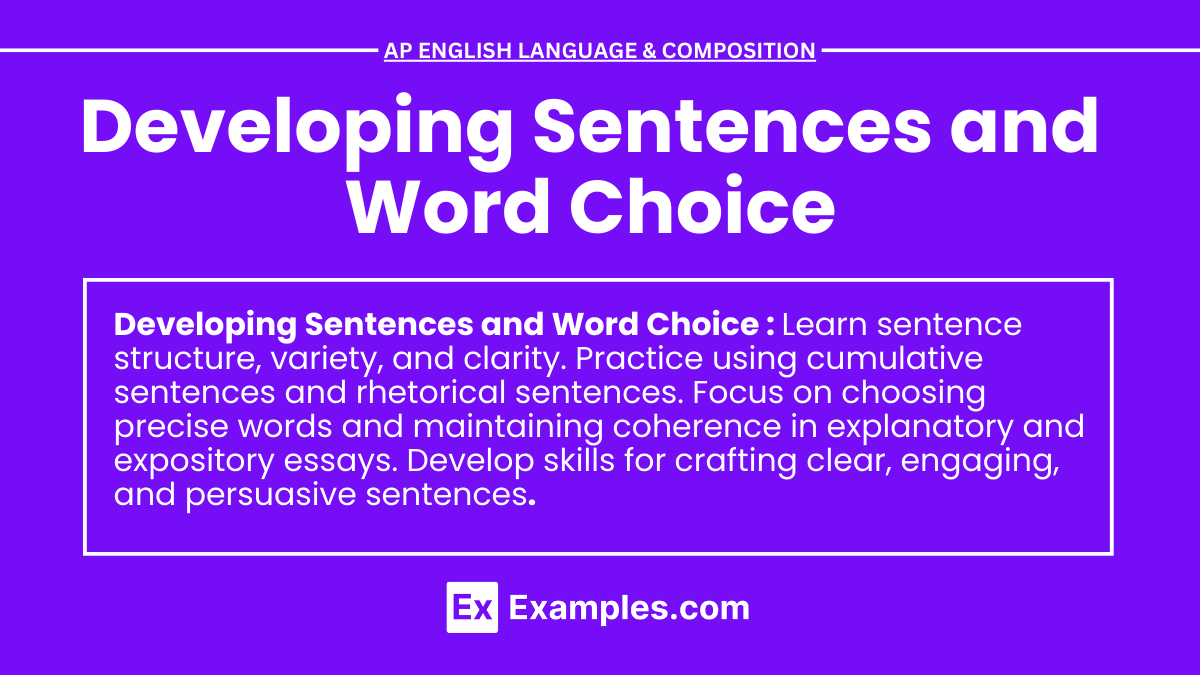In the AP English Language and Composition exam, developing effective sentences and making strategic word choices are crucial for creating clear, engaging, and persuasive essays. Whether engaged in argumentative writing or delivering an argumentative speech, using rhetorical sentences and cumulative sentences enhances the impact and flow of your arguments. Mastering these skills ensures your writing is not only precise and coherent but also compelling and resonant with your audience. By focusing on sentence structure, variety, clarity, and diction, you can communicate complex ideas effectively and persuasively.
Free AP English Language and Composition Practice Test
Learning Objectives
By studying the topic of developing sentences and word choice, students will achieve several key learning objectives. They will enhance their critical thinking skills by constructing clear and logical sentences. Students will learn to use cumulative sentences and rhetorical sentences to improve their explanatory essays and expository essays. They will develop the ability to craft a strong final thesis statement with precise and impactful diction. Mastery of these techniques will enable students to produce well-structured, engaging, and persuasive essays.
Understanding Sentence Structure
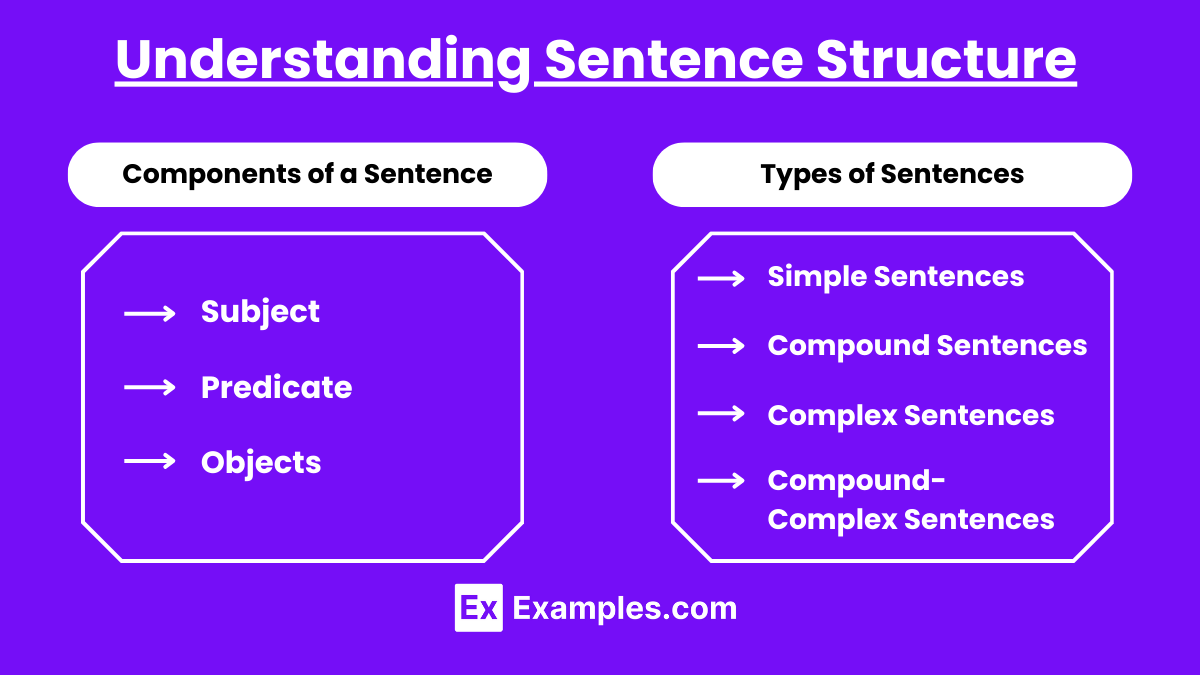
Components of a Sentence
Subject: The main noun or pronoun that performs the action or is described.
Predicate: The part of the sentence that contains the verb and tells what the subject does or is.
Objects: Direct and indirect objects that receive the action of the verb.
Types of Sentences
Simple Sentences: Contain a single independent clause.
Example: "The cat slept."
Compound Sentences: Contain two or more independent clauses joined by a conjunction or semicolon.
Example: "The cat slept, and the dog played."
Complex Sentences: Contain an independent clause and one or more dependent clauses.
Example: "While the cat slept, the dog played."
Compound-Complex Sentences: Contain two or more independent clauses and one or more dependent clauses.
Example: "While the cat slept, the dog played, and the bird sang."
Enhancing Sentence Variety
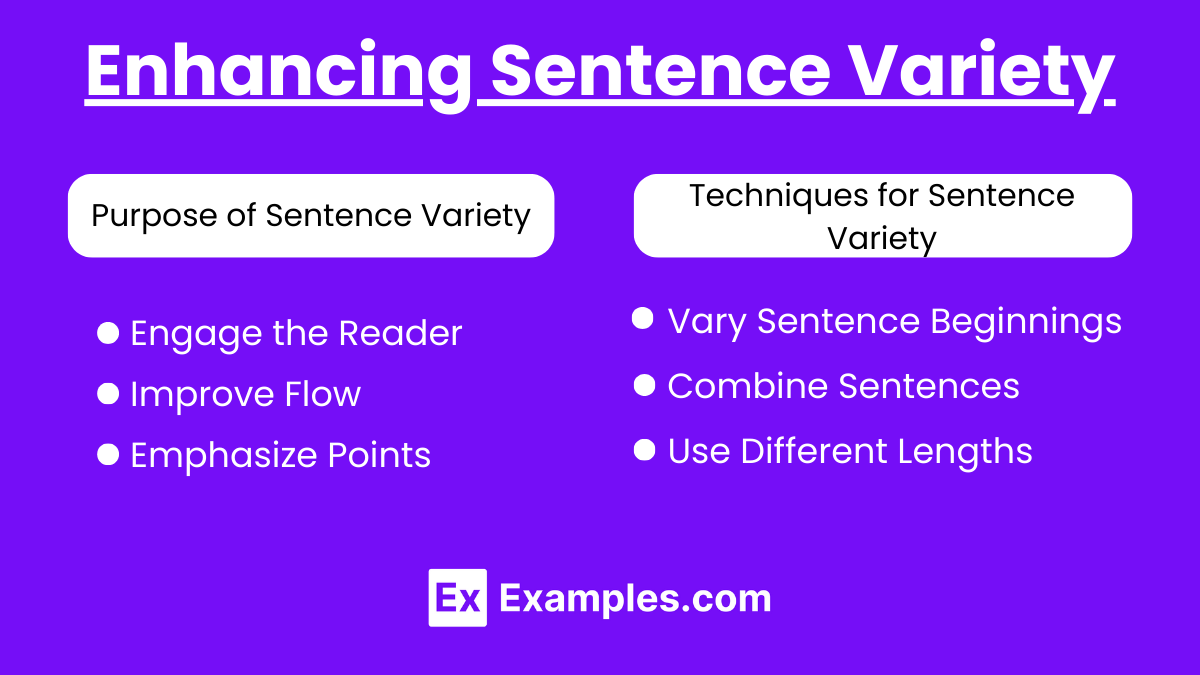
Purpose of Sentence Variety
Engage the Reader: Varied sentence structures maintain interest.
Improve Flow: Different sentence lengths and types create a natural rhythm.
Emphasize Points: Strategic use of different sentences can highlight key ideas.
Techniques for Sentence Variety
Vary Sentence Beginnings: Start sentences with different parts of speech or clauses.
Example: "Running through the park, she felt free." vs. "She felt free as she ran through the park."
Combine Sentences: Use compound and complex sentences to combine ideas.
Example: "She loves to read. She often spends hours in the library." becomes "She loves to read and often spends hours in the library."
Use Different Lengths: Mix short, impactful sentences with longer, descriptive ones.
Example: "He stopped. The door creaked open slowly, revealing a dark, empty room."
Ensuring Sentence Clarity
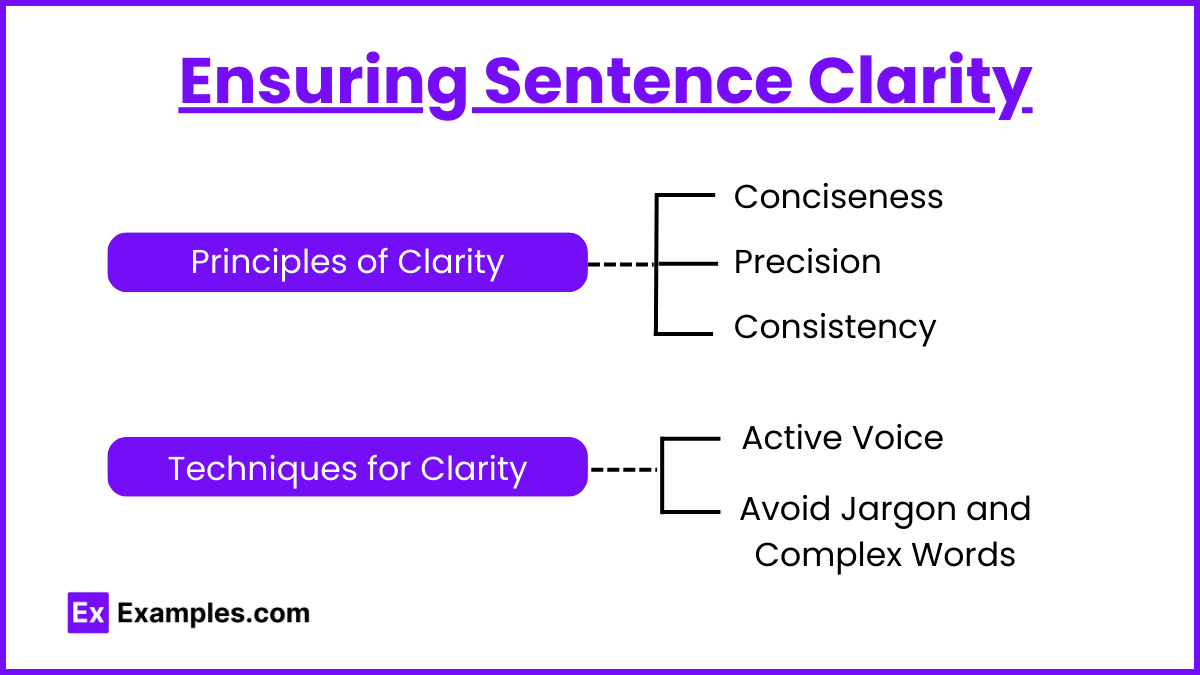
Principles of Clarity
Conciseness: Remove unnecessary words and redundancy.
Example: "Due to the fact that" becomes "Because."
Precision: Use specific and concrete words rather than vague terms.
Example: "The large animal" becomes "The elephant."
Consistency: Maintain consistent tense and point of view.
Example: "She was walking and eats an apple" should be "She was walking and eating an apple."
Techniques for Clarity
Active Voice: Use active voice to make sentences more direct and vigorous.
Example: "The ball was thrown by John" becomes "John threw the ball."
Avoid Jargon and Complex Words: Use simple and straightforward language unless complex terms are necessary for clarity.
Example: "Utilize" becomes "Use."
Making Strategic Word Choices
Understanding Word Choice
Definition
Word choice, or diction, refers to the selection of words in writing. It influences tone, clarity, and style.
Types of Diction
Formal Diction: Professional and academic language.
Example: "The experiment's results were inconclusive."
Informal Diction: Casual and conversational language.
Example: "The results of the experiment were all over the place."
Concrete Diction: Specific and tangible words.
Example: "The red apple."
Abstract Diction: General and intangible words.
Example: "The concept of freedom."
Techniques for Effective Word Choice
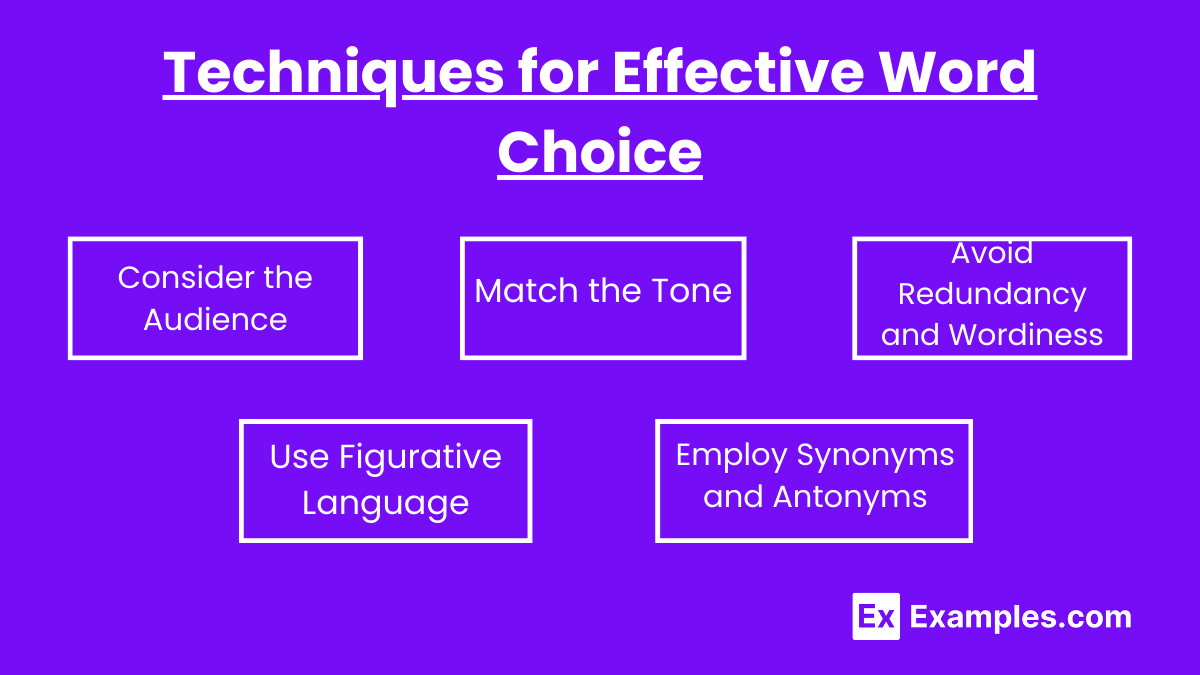
Consider the Audience
Choose words that are appropriate for the intended audience.
Example: Use formal diction for academic papers and informal diction for personal narratives.
Match the Tone
Ensure that word choice aligns with the desired tone of the piece.
Example: Use serious and respectful language for a eulogy, and light and humorous language for a comedic piece.
Avoid Redundancy and Wordiness
Use concise language and eliminate unnecessary words.
Example: "In order to" becomes "To."
Use Figurative Language
Incorporate metaphors, similes, and analogies to enhance imagery and understanding.
Example: "The classroom was a beehive of activity."
Employ Synonyms and Antonyms
Use synonyms to avoid repetition and antonyms to highlight contrasts.
Example: Instead of repeating "happy," use "joyful," "elated," or "content."
Examples
Example 1: Enhancing Sentence Variety
Original: "The sun set. The sky turned red. The birds flew home." Revised: "As the sun set, the sky turned a deep red, and the birds flew home."
Example 2: Ensuring Clarity
Original: "Due to the fact that the project was complex in nature, it took a significant amount of time to complete." Revised: "Because the project was complex, it took a long time to complete."
Example 3: Strategic Word Choice
Original: "The teacher said that the student needs to improve his writing skills." Revised: "The teacher insisted that the student must refine his writing skills."

